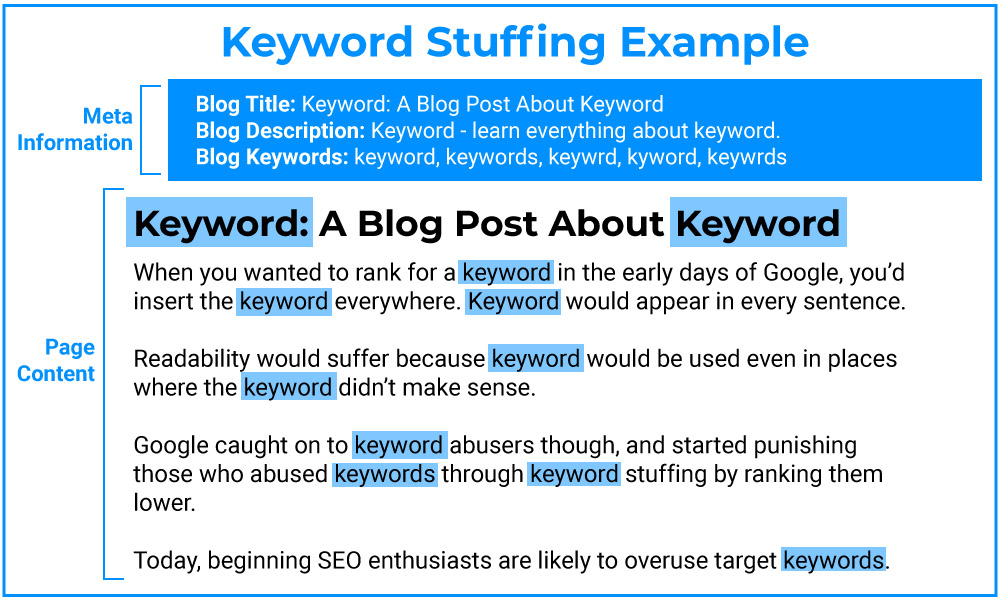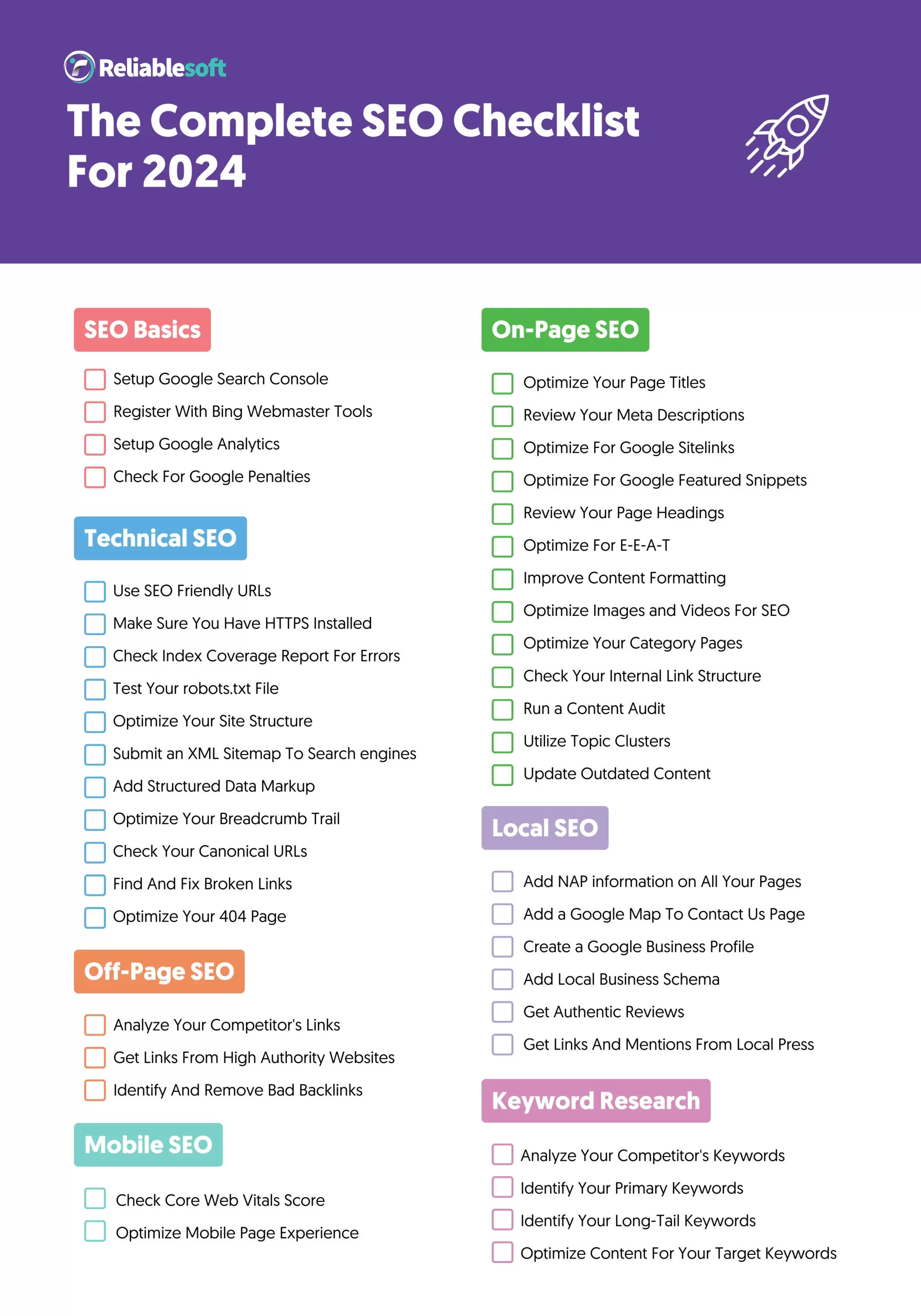No, Google is not specifically punishing keyword SEO blogs. But, they are cracking down on poor practices.
Google’s algorithms have evolved. It’s no longer just about stuffing keywords. Quality content is key. Keyword stuffing and low-quality content can hurt your rankings. Google’s focus is on user experience. They want content that truly helps readers. This means your blog must be valuable and relevant.
In this blog, we’ll explore Google’s approach to keyword SEO. We’ll discuss how to create content that Google loves. You’ll learn what to avoid and what to embrace. By the end, you’ll understand how to optimize your blog without penalties. Let’s dive in and make your content Google-friendly.
Google’s Algorithm Updates
Google’s algorithm updates have caused much discussion in the SEO world. These updates can change how websites rank in search results. Some bloggers worry that Google punishes sites using keyword SEO. Let’s explore the history and impact of these algorithm changes.
History Of Algorithm Changes
Google has a long history of updating its search algorithms. Each update aims to improve the user experience. In 2011, the Panda update started targeting low-quality content. It affected sites with thin or duplicate content. In 2012, the Penguin update focused on webspam. It punished sites with unnatural backlinks. These updates showed Google’s focus on content quality.
Later updates continued this trend. The Hummingbird update in 2013 improved search query understanding. It helped Google provide better results based on user intent. The RankBrain update in 2015 introduced machine learning. It helped Google understand complex queries. These changes pushed SEO experts to focus on quality and relevance.
Impact On Seo Practices
Algorithm updates forced changes in SEO practices. Keyword stuffing became a risky practice. Google started valuing natural language and context. SEO experts had to adapt. They began focusing on creating valuable content. This content needed to be relevant and engaging for users.
Backlink strategies also changed. Google now values quality over quantity. Websites need backlinks from reputable sources. This shift made link-building more challenging. It also reduced the effectiveness of manipulative practices. Algorithm updates emphasized the importance of user experience. Fast loading times and mobile-friendliness became crucial.
Overall, these changes made SEO more user-focused. They pushed for better content and improved user experience. This approach helps sites rank higher without relying on keyword stuffing.

Credit: buildingtheblog.com
The Rise Of Content Quality
Google has shifted its focus. It values content quality over keyword stuffing. This change means that websites need to produce valuable content. Quality content satisfies user intent. It provides information that users seek. This shift in Google’s approach emphasizes the importance of content quality.
Shift From Keywords To Quality Content
Google’s algorithm updates highlight this shift. In the past, keyword density was crucial. Now, the emphasis is on relevance and quality. Search engines now prioritize content that is well-written and informative. They look for articles that answer user queries effectively.
- Use keywords naturally
- Focus on user intent
- Create valuable, informative content
Content that serves user needs ranks higher. This means understanding what users are searching for. Create content that addresses those needs. Focus on providing value rather than stuffing keywords.
Google’s Focus On User Experience
Google’s goal is to enhance user experience. It rewards websites that are user-friendly. This includes factors like page load speed and mobile responsiveness. Google also values well-structured content. It should be easy to read and navigate.
| Factors | Importance |
|---|---|
| Page Load Speed | High |
| Mobile Responsiveness | High |
| Content Structure | High |
Ensure your content is accessible. Use headings and subheadings effectively. Break down long paragraphs. Make your content scannable. Use bullet points and lists. This improves readability and user experience.
Google’s focus on user experience means your content must be engaging. It should hold the reader’s attention. Provide answers quickly and clearly. This keeps users on your page longer. It reduces bounce rates and improves rankings.
Case Studies
Case studies offer real-world insights into the effects of Google’s updates. They highlight how some blogs thrive, while others face penalties. This section explores both sides of the spectrum. It examines successful SEO blogs and those penalized by Google.
Successful Seo Blogs Post-update
Some blogs continue to rank well after Google’s updates. These successful blogs focus on quality content. They avoid keyword stuffing. Their content is relevant and valuable to readers. For instance, Blog A saw a 20% increase in traffic. They used long-tail keywords naturally. They prioritized user experience over keyword density. Blog B also saw success. Their strategy involved comprehensive, informative posts. They incorporated keywords in a user-friendly manner. Both blogs adapted to changes, ensuring compliance with Google’s guidelines.
Blogs Penalized By Google
Other blogs weren’t so fortunate. They faced penalties due to outdated SEO practices. Blog X relied heavily on keyword stuffing. They saw a 50% drop in traffic post-update. Their content lacked depth and relevance. Blog Y experienced a similar fate. They used irrelevant keywords excessively. Their posts were more about ranking than providing value. These blogs failed to adapt. Their focus on quantity over quality led to penalties. Google’s updates aim to improve search experience. Blogs that ignore this face negative consequences.

Credit: rockcontent.com
Common Seo Mistakes
Optimizing your content for search engines is crucial. But many make common SEO mistakes. These errors can harm your rankings. Let’s explore these mistakes and how to avoid them.
Keyword Stuffing
Keyword stuffing involves overusing keywords in your content. This practice aims to trick search engines. But it often results in poor-quality content. Readers find it hard to read. Google also penalizes keyword stuffing.
Avoid repeating the same keyword many times. Use variations and synonyms. Focus on natural language. Ensure your content is readable. Here is an example:
| Good Example | Bad Example |
|---|---|
| Our bakery offers fresh bread daily. | Bakery fresh bread bakery fresh bread bakery fresh bread. |
Good content uses keywords naturally. It flows smoothly. Bad content, on the other hand, feels forced and awkward.
Ignoring Content Relevance
Many focus on keywords alone. They forget about content relevance. Relevant content is key to SEO success. It engages readers. It answers their questions. Google values relevant content.
Ensure your content matches the topic. Don’t add unrelated keywords. Keep your audience in mind. Ask yourself these questions:
- Does my content solve a problem?
- Is it informative?
- Will my audience find it useful?
Relevant content improves user experience. It keeps readers on your site longer. Google rewards this with higher rankings.
Remember, quality over quantity. Focus on creating valuable content. Avoid these common SEO mistakes. Your readers and Google will thank you.
Best Practices For Modern Seo
In the constantly evolving world of SEO, strategies must adapt to stay effective. It’s no longer enough to stuff blogs with keywords. Modern SEO practices focus on balancing keywords with quality and creating content that delivers real value to readers. Let’s explore these best practices.
Balancing Keywords And Quality
Using keywords is important, but their placement should feel natural. Overusing keywords can make content sound awkward. This can lead to penalties from search engines. Aim for a smooth flow. Integrate keywords seamlessly into your sentences. Think about the reader’s experience. Good content reads well and makes sense.
Creating Value-driven Content
High-quality content provides answers and solutions. Readers come to your blog for information. Ensure your content meets their needs. Focus on delivering clear, concise, and useful information. This approach builds trust and encourages return visits.
Value-driven content also means staying relevant. Cover topics that matter to your audience. Use data and research to support your points. This adds credibility and depth to your writing. Remember, content that helps your readers will always perform better.
Tools And Techniques
In the world of SEO, tools and techniques play a vital role. They help you analyze, optimize, and improve your content. These tools and strategies ensure your blog performs well without falling into the trap of keyword stuffing. Let’s explore some essential tools and methods to keep your SEO game strong.
Seo Analysis Tools
SEO analysis tools are crucial for understanding your blog’s performance. Tools like Google Analytics and SEMrush provide valuable insights. They show which keywords drive traffic to your site. They also highlight areas where you can improve. These tools track important metrics like bounce rate and session duration. This data helps you adjust your content strategy accordingly.
Content Optimization Strategies
Content optimization involves using keywords naturally. Avoid overstuffing them in your articles. Focus on creating valuable and informative content. Use synonyms and related terms to make your writing more natural. Break up your text with headers, bullet points, and short paragraphs. This improves readability and user experience.
Another key strategy is to include internal and external links. Internal links guide readers to other relevant pages on your site. External links connect to reputable sources, adding credibility to your content. Always ensure your links are relevant and useful to the reader.
Future Of Seo Blogging
The future of SEO blogging is evolving rapidly. With every update, Google changes the way SEO works. Bloggers need to stay ahead of these changes. Understanding the future trends is key. This post explores the potential future of SEO blogging.
Predictions For Google’s Algorithm
Google’s algorithm will continue to get smarter. Future updates will focus more on user experience. Quality content will become more important. Keyword stuffing will be less effective. Google’s AI will better understand context and intent. This means bloggers must create valuable content. Content that answers questions and solves problems. Engagement will play a bigger role in ranking. High bounce rates could hurt your blog’s visibility. The algorithm will reward natural, relevant content.
Evolving Trends In Seo
Voice search is on the rise. More people use voice assistants to search online. Blogs must adapt to this change. Use natural language in your content. Long-tail keywords will become more important. Mobile-first indexing is crucial. Ensure your blog is mobile-friendly. Speed and usability matter. Visual content is gaining traction. Infographics, videos, and images enhance user experience. They also boost engagement. Featured snippets are valuable. Aim to provide clear, concise answers. Structured data helps search engines understand your content. Implement schema markup where possible.

Credit: www.reliablesoft.net
Frequently Asked Questions
Is Google Penalizing Keyword-stuffed Blogs?
Yes, Google penalizes blogs with excessive keyword stuffing. It prefers natural, user-focused content.
How Many Keywords Are Too Many For Seo?
Using too many keywords, also known as keyword stuffing, can harm your SEO. Aim for natural use.
Can Keyword Stuffing Hurt My Blog Ranking?
Yes, keyword stuffing can hurt your blog ranking. Google values quality and relevance over keyword frequency.
How Can I Avoid Keyword Stuffing In My Blog?
Use keywords naturally. Focus on writing helpful, relevant content. Avoid repeating keywords unnecessarily.
Conclusion
Google values quality content over keyword stuffing. Focus on creating useful, engaging blogs. Avoid overusing keywords. Write naturally and prioritize reader experience. Quality content builds trust with readers. Search engines reward helpful, clear information. Balance keywords and readability. This approach ensures long-term success.
Embrace quality writing for better SEO results.

